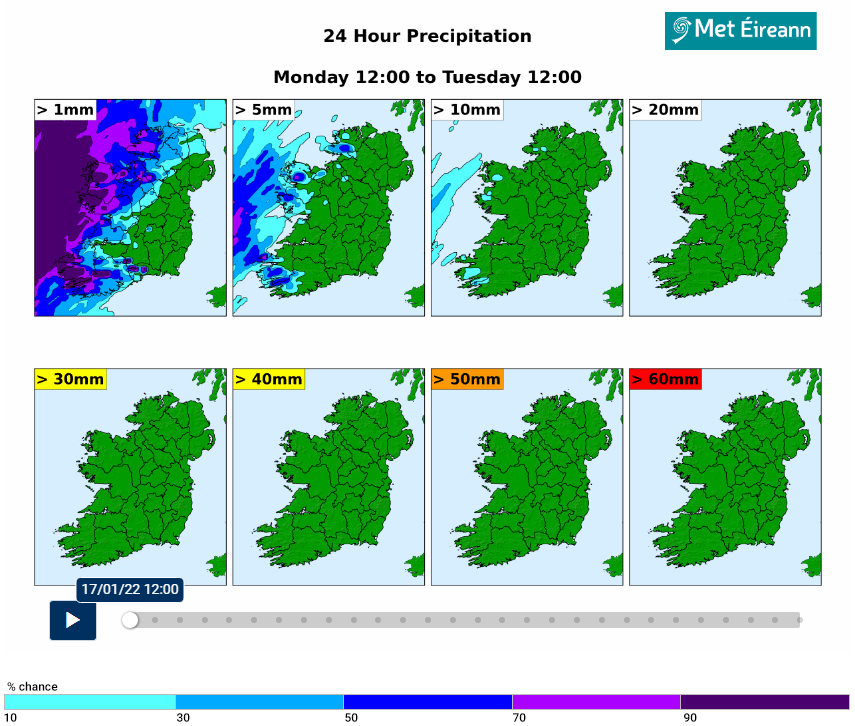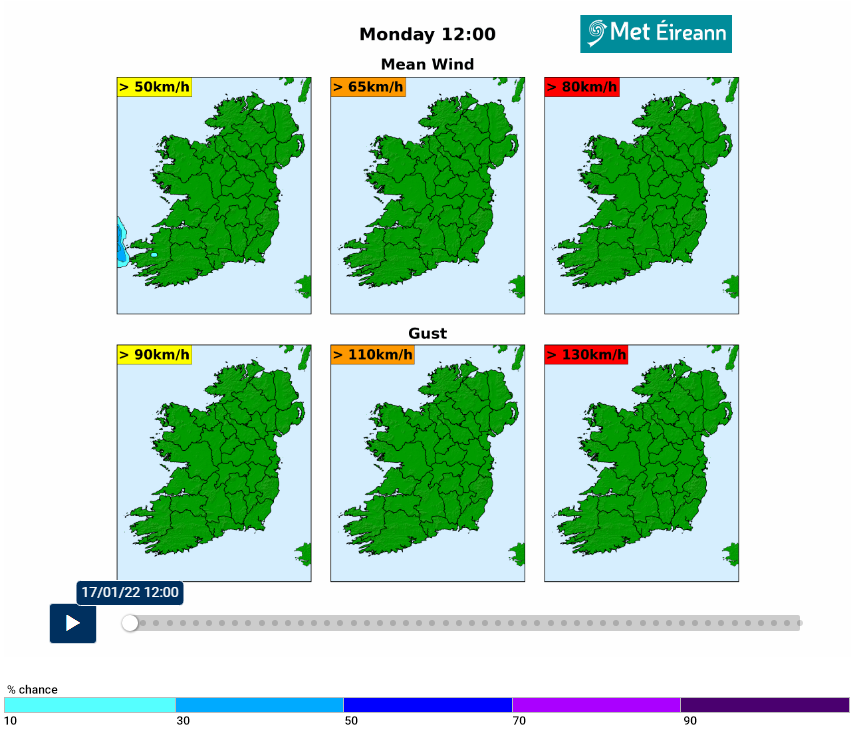We have just commenced our new Ensemble Forecast Probability Maps displaying the percentage probability of forecast precipitation for 6 hours and 24 hours, and for mean hourly 10-metre wind speed and gust, for up to 2 days ahead.
6 Hour And 24 Hour Precipitation Charts
The precipitation charts show the percentage probability of forecast precipitation in 6-hourly or 24-hourly intervals exceeding threshold accumulations of 1mm, 5mm, 10mm, 20mm, 30mm, 40mm, 50mm and 60mm.
Mean Wind and Gust
The Wind chart shows forecast percentage probability of hourly 10-metre wind speeds exceeding 50km/h, 65km/h or 80km/h.
Gust chart shows forecast probability of hourly 10-metre wind gusts exceeding 90km/h, 110km/h or 130km/h.
The probabilities are calculated using data from Met Éireann’s high-resolution Ensemble Prediction System, IREPS.
The colour coded thresholds relate to Met Éireann’s colour coded warning levels. However, warnings are not exclusively determined by threshold exceedances as forecasters take potential impacts into account also.
If none of the legend colours appear on a particular map, this indicates that the probability of exceeding that threshold is less than 10%.
A percentage probability forecast map for Temperature is currently under development and will be available in the coming months.
What is an Ensemble Prediction System?
Weather forecasters use guidance from Numerical Weather Prediction (NWP) mathematical models. Such models require initial conditions such as weather observations and information at the boundaries of the area over which the model is run in order to produce forecasts. These models consists of mathematical equations used to predict the evolution of the state of the atmosphere. Runs of the model are known as deterministic forecasts and offer one solution, or one forecast, based on a set of initial conditions.
On the other hand, ensemble forecasting involves several concurrent runs of an NWP model, each with slightly different, or perturbed, initial conditions. Perturbations are a way of expressing the uncertainty in the initial conditions provided to the model. These uncertainties arise due to a sparsity of weather observations and errors in measurements, and mean that we can never fully know the exact state of the atmosphere at a given moment.
An ensemble system uses a range of slightly different initial conditions with each set of initial conditions leading to a different forecast. These forecasts are known as ensemble members, each of which represents an equally likely outcome or forecast. Ensemble Prediction Systems (EPS) therefore provide a sense of the probability of certain weather conditions, as well as the range of possibilities.
In the video below you can listen to Dr Rónán Darcy and Dr Alan Hally talking about setting up the Met Éireann EPS, called IREPS – Irish Regional Ensemble Prediction System – and how it benefits weather forecasting.


